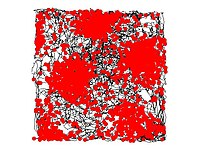
Photo from wikipedia
Generalizing experiences to guide decision-making in novel situations is a hallmark of flexible behavior. Cognitive maps of an environment or task can theoretically afford such flexibility, but direct evidence has… Click to show full abstract
Generalizing experiences to guide decision-making in novel situations is a hallmark of flexible behavior. Cognitive maps of an environment or task can theoretically afford such flexibility, but direct evidence has proven elusive. In this study, we found that discretely sampled abstract relationships between entities in an unseen two-dimensional social hierarchy are reconstructed into a unitary two-dimensional cognitive map in the hippocampus and entorhinal cortex. We further show that humans use a grid-like code in entorhinal cortex and medial prefrontal cortex for inferred direct trajectories between entities in the reconstructed abstract space during discrete decisions. These grid-like representations in the entorhinal cortex are associated with decision value computations in the medial prefrontal cortex and temporoparietal junction. Collectively, these findings show that grid-like representations are used by the human brain to infer novel solutions, even in abstract and discrete problems, and suggest a general mechanism underpinning flexible decision-making and generalization.
Journal Title: Nature neuroscience
Year Published: 2021
Link to full text (if available)
Share on Social Media: Sign Up to like & get
recommendations!